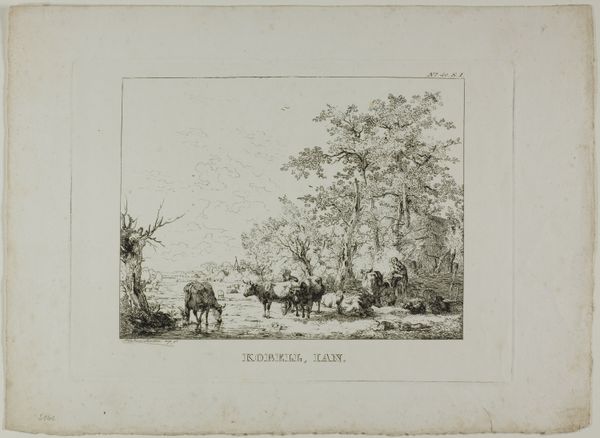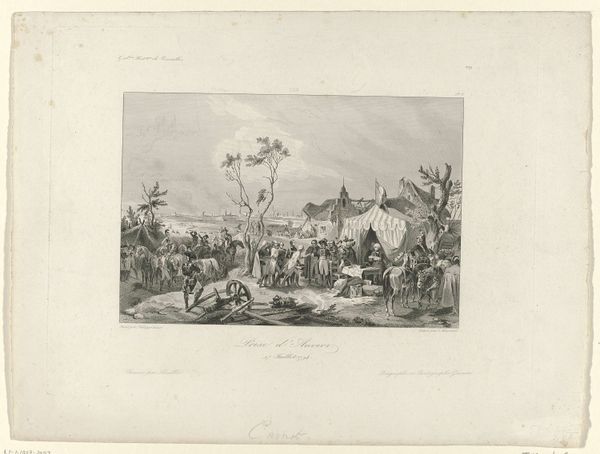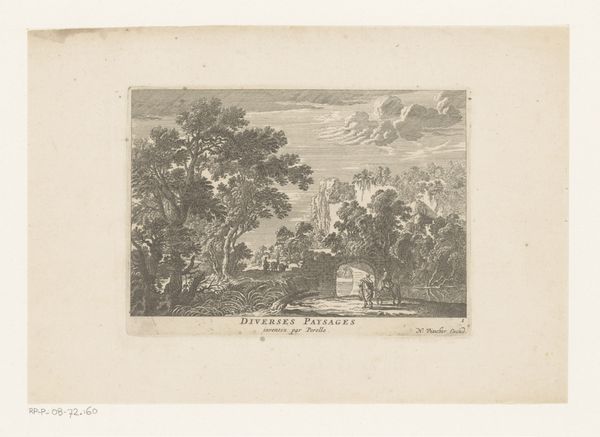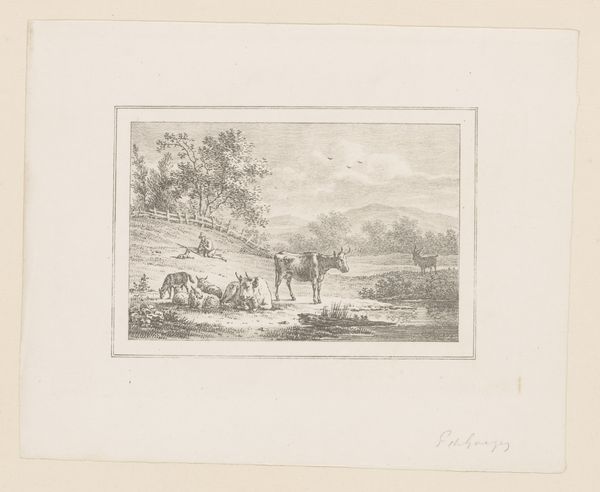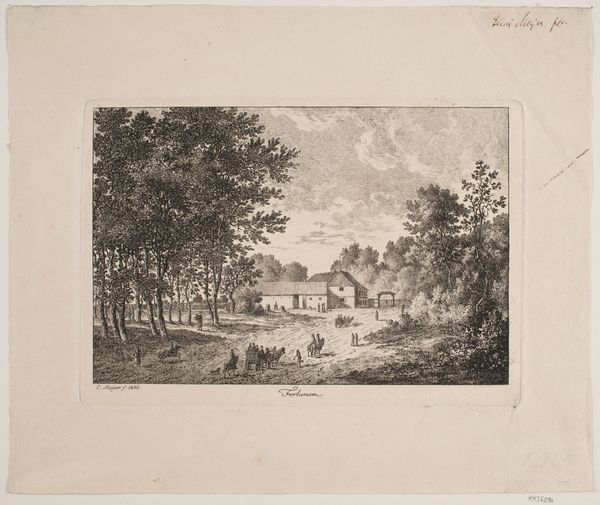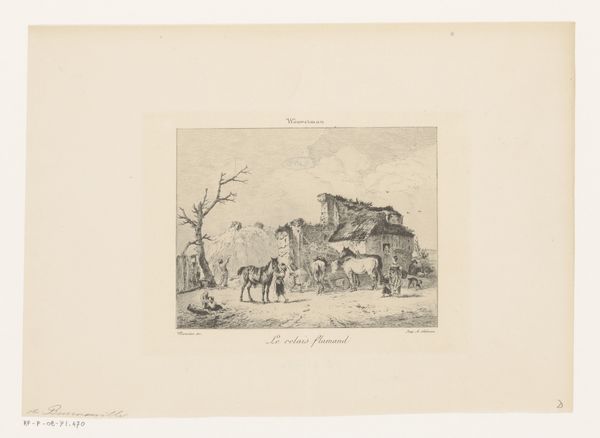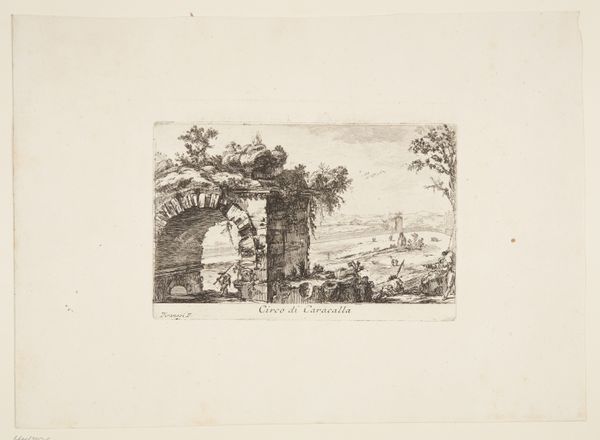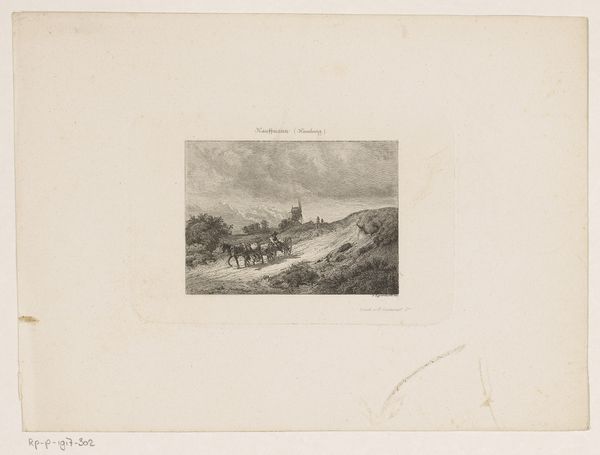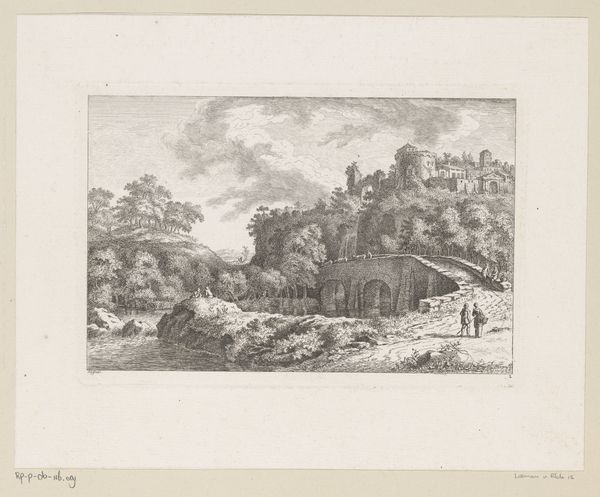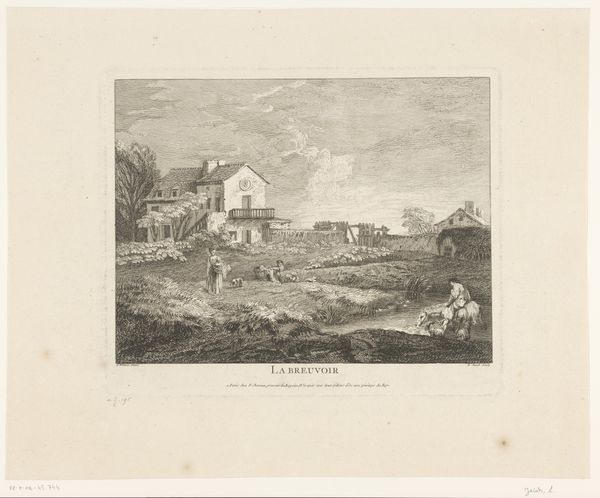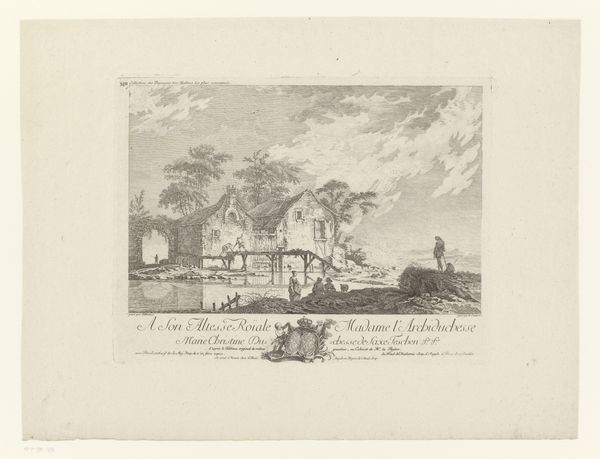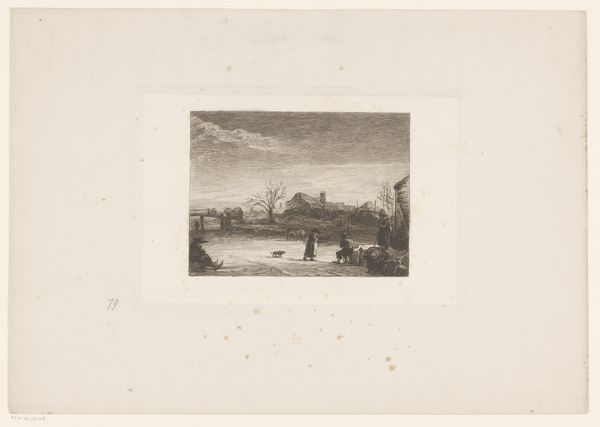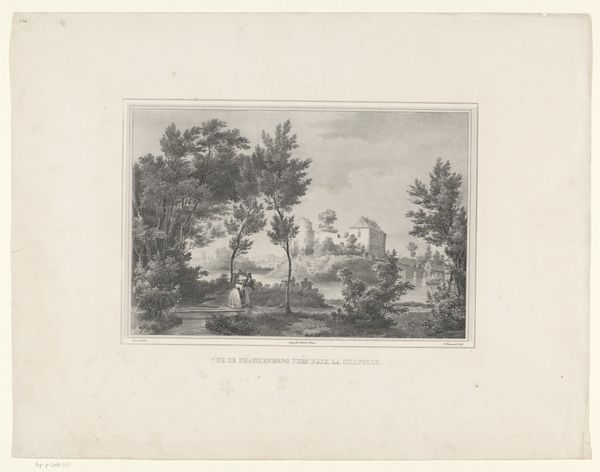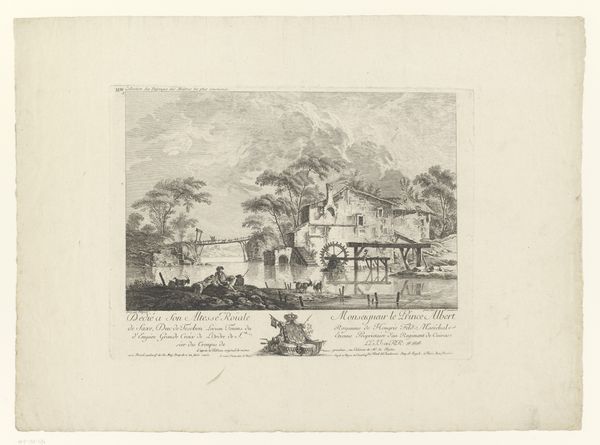
drawing, print, etching, paper
#
drawing
#
water colours
#
narrative-art
# print
#
etching
#
landscape
#
paper
#
romanticism
Dimensions: 155 × 198 mm
Copyright: Public Domain
Curator: Adrian Ludwig Richter etched this view titled "Monte Circello" in 1831, a piece showcasing the Italian landscape as encountered by everyday folk. Editor: There's a tranquility in this print despite all the activity. It reminds me of those fleeting moments where the world holds its breath before something shifts. Curator: Considering its time, etching allowed for fairly reproducible images that became part of a broader visual culture. Richter used etching techniques to capture details, emphasizing texture, light, and the overall ambiance of a Romantic-era landscape, which supported travel, cultural identity and also commerce. Editor: I get that. But look at the figures – they’re not just picturesque, they feel worn down by a journey. I wonder what their stories are, beyond being mere landscape fillers? Perhaps the journey holds an underlying commentary? Curator: That’s insightful. Richter came from a modest background; he understood the social fabric and depicted these characters using specific lines for their faces and worn out attire which indicates he meant to show empathy for people in his print. The choice of paper affects our perception, too, because etching prints demanded fine papers. Editor: Speaking of paper, I am imagining Richter bent over this etching, patiently crafting that sky... Those meticulous strokes—they carry the weight of tradition, almost like meditation! There is more work involved in creating such small-scale and realistic depiction. Curator: Precisely! Richter wanted to represent, in tangible form, the way people existed within, were subjected to and also helped to change landscapes. The print can speak volumes about societal expectations from work ethics that defined early-19th-century culture, including Richter. Editor: You have got me thinking about those distant ships, or the family enjoying an impromptu picnic, are they actually on the shore, or inside some form of illusion? This has more complexity than I expected! Curator: Seeing this from your perspective has revealed details about "Monte Circello", making the material come alive and offer a sense that its visual beauty represents deeper contexts of labour, making it even more fascinating. Editor: Agreed, now I can almost smell the sea air, mixed with etching ink. Richter made it come alive while quietly alluding to greater struggles in those etched lines.
Comments
No comments
Be the first to comment and join the conversation on the ultimate creative platform.
